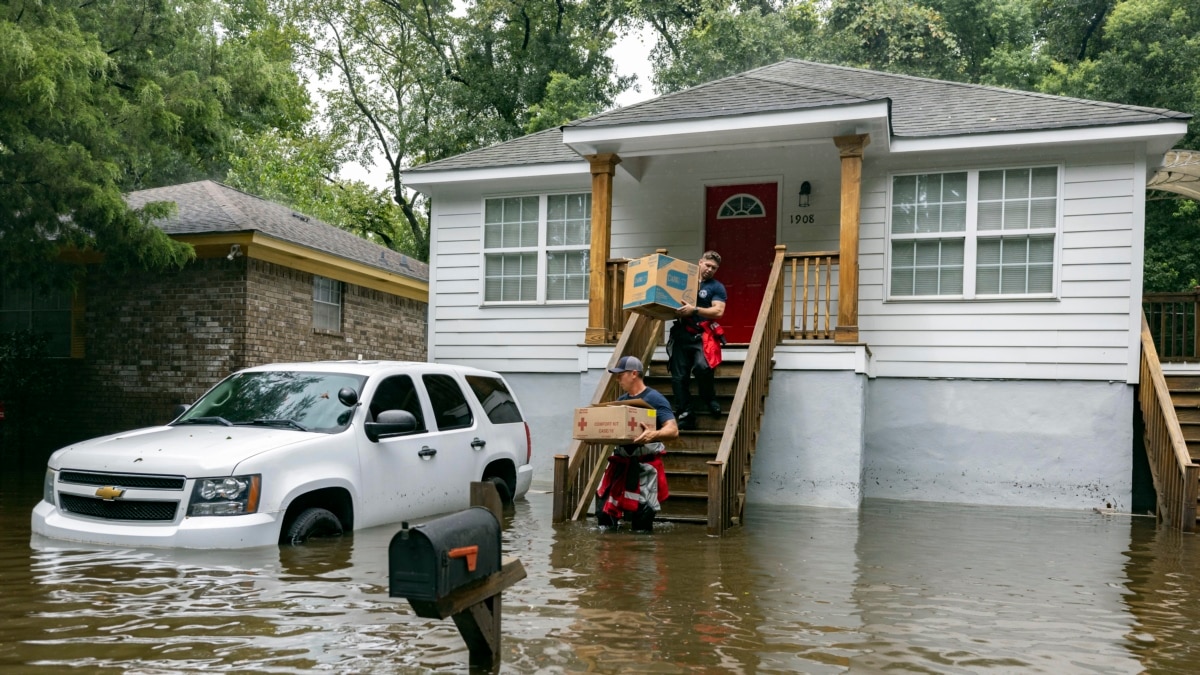Tropical Storm Debby turned north toward the South Carolina coast Tuesday night, bringing heavy rain. The rain is expected to persist through Thursday in parts of eastern South Carolina and southeastern North Carolina, according to a report from the U.S. National Oceanic and Atmospheric Administration (NOAA).
According to the report, heavy rains will likely cause “significant flooding impacts” in the Carolinas, parts of the Mid-Atlantic states and Vermont through Saturday morning. Tropical storm conditions will extend across both Carolinas through Thursday, with warnings of a dangerous storm surge, NOAA said.
The slow-moving storm swamped coastal towns in Georgia and South Carolina on Monday night and Tuesday, spawning tornadoes and submerging streets in waist-deep water. The storm had already dumped more than a foot of rain in some places and could accumulate as much as 25 inches in some spots before it ends.
A sign is dropped as Tropical Storm Debby moves from Georgia into the North Atlantic, in Isle of Palms, South Carolina, U.S., August 6, 2024. REUTERS/Marco Bello
Charleston, South Carolina, and Savannah, Georgia, were flooded Tuesday and imposed curfews as police closed streets. Dozens of roads were closed in Charleston due to flooding similar to what it experiences several times a year due to rising sea levels.
In one Savannah neighborhood, firefighters used boats to evacuate some residents and waded through flooded areas to hand out bottled water and other supplies to those who refused to leave.
In Charleston, Mayor William Cogswell said road closures had prevented damage to businesses and homes and avoided the need for water rescues. “We especially don’t need any adventurers driving through the water and causing property damage,” Cogswell said.
As much as 15 inches (38 cm) of rain was expected in some places in the Carolinas, a total approaching what the area saw in the historic flooding associated with Hurricane Matthew in 2016. Two years later, Hurricane Florence broke many of those records. Both storms left dozens dead.
North Carolina and Virginia have declared a state of emergency.
Several areas along the North Carolina coast are prone to flooding, including Wilmington and the Outer Banks. Virginia could see strong winds, heavy rain and flooding.
“Tropical cyclones always produce heavy rain, but usually because they are moving, it doesn’t accumulate much in one place,” said Richard Pasch of the hurricane center. “But when they move very slowly, that’s the worst situation.”
People walk through a flooded entrance to the beach as Tropical Storm Debby moves from Georgia into the North Atlantic, in Isle of Palms, South Carolina, U.S., August 6, 2024. REUTERS/Marco Bello
Far to the north in New York City, severe storms that forecasters said were exacerbated by Debby flooded some streets and roads, leaving drivers stranded. The National Weather Service issued a flood warning until midday Wednesday for the entire city.
Emergency officials warned of the risk of flash flooding and used drones with loudspeakers in some city neighborhoods to tell people in basement apartments to be ready to flee at any time.
Debby made landfall as a Category 1 hurricane on Florida’s Gulf Coast on Monday.
At least six people have died in the storm, five of them in traffic accidents or from falling trees. The sixth was a 48-year-old man from Gulfport, Florida, whose body was recovered after his anchored sailboat partially sank, according to WTSP-TV.
Debby is expected to begin moving faster Thursday and could move over central North Carolina, across Virginia and into the Washington area on Saturday.
[Con información de The Associated Press]
Connect with the Voice of America! Subscribe to our channels YouTube, WhatsApp and the newsletter. Activate notifications and follow us on Facebook, X e Instagram.


